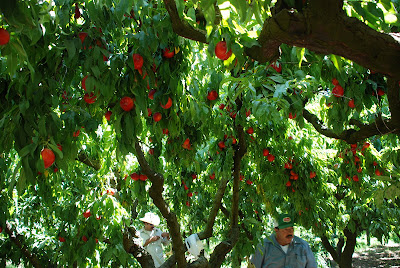So, I was taking a course on orchard management. One important aspect of it was "vertebrate pest management."
Orchards provide food and shelter for small animals that can cause significant damage:
- Squirrels feed on fruit and on tree bark and shoots, which can stunt growth or even kill trees.
- Rabbits will chew on flexible irrigation lines and emitters.
- Gophers will dig holes through the soil surface, thereby channeling surface irrigation water to undesired areas.
- Food safety also becomes an issue if pest residues come into contact with the fruit.
Management programs for vertebrate pests involve 4 basic steps:
- Correctly identify the pest species using damage signs, burrows or habitat, tracks, feces, etc.
- Modify the habitat to make the area less favorable to the pest species.
- Implement appropriate control. Includes baiting, fencing, shooting or trapping. Use due consideration for the environment and non-target species.
- Establish a monitoring system so as to detect re-infestation.


















